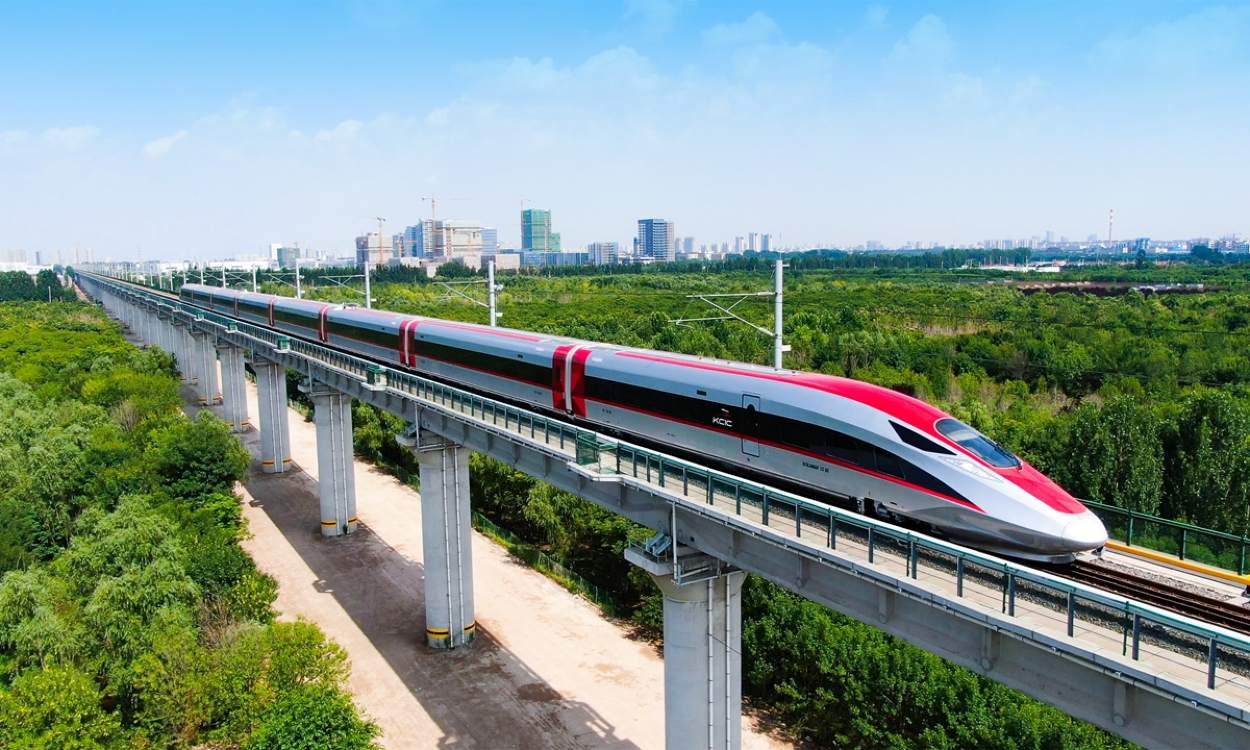China has achieved a key milestone in its quest to revolutionize transportation with another successful test run of its ultra-high-speed Maglev system, often dubbed the “high-speed flying train.”
This latest trial, held in Datong, Shanxi Province, marked a crucial milestone for the ambitious project aimed at achieving speeds of up to 1,000 kilometers per hour (621 miles per hour).
The test, conducted in a specially constructed 2-kilometer-long tube featuring a low-vacuum environment, focused on the integration and performance of the train’s complex systems.
While specific speed data from the test was not disclosed, officials confirmed that the performance aligned with their projections.
During the trial, the superconducting Maglev train demonstrated good stability and control. Key technologies, including the large-scale vacuum environment and advanced superconducting navigation controls, were rigorously evaluated.
According to reports from the South China Morning Post (SCMP), the train successfully demonstrated stable suspension and precise navigation, with its trajectory aligning closely with theoretical predictions.
A project spokesperson emphasized that the successful trial had significantly advanced the system’s technical readiness, laying a robust foundation for future tests.
This ambitious hyperloop project, a collaboration between the Shanxi provincial government and China Aerospace Science and Industry Corporation, aims to redefine rail transportation.
The ultimate goal, according to the Chinese media, is to create Maglev trains that can “fly on the ground” at speeds comparable to aircraft.
The full-scale test line, which began construction in April 2022 and was completed in November 2023, is situated in Yanggao, near Datong.
This innovative project merges aerospace and rail technologies, setting the stage for a new era in ultra-fast ground transportation.
The high-speed Maglev trains could become a vital component of China’s transportation network, potentially transforming commuter travel in major city clusters. For instance, they might reduce the travel time between Beijing and Shanghai to a mere 90 minutes (The high-speed G-Series train takes 4 hours and 20 minutes to 4 hours and 30 minutes).
The Concept Of ‘Hyperloop’ Floating Train
The concept of a transport system operating within a low-pressure tube has fascinated engineers and visionaries for over a century. However, it was tech billionaire Elon Musk’s 2013 white paper that brought this idea into the modern spotlight.
Musk’s vision, detailed in his “alpha paper,” proposed a groundbreaking mode of transportation he termed the Hyperloop.
This concept imagined aerodynamic pods designed to carry passengers and cargo, traveling at astonishing speeds of up to 760 miles per hour through near-vacuum tubes, reminiscent of the futuristic transport systems depicted in classic science fiction.
Musk envisioned this technology as a “fifth mode of transportation”, positioning it alongside cars, trains, planes, and ships. His ambitious goal was to enable rapid transit between major cities—such as Los Angeles and San Francisco, and New York and Washington D.C.—in as little as 30 minutes.
Musk suggested that such a transformation could revolutionize how we live and work by drastically cutting travel times and making distant cities more accessible.
At the heart of this vision is the technology of magnetic levitation, or Maglev, which aims to address two significant challenges facing conventional rail transport: friction and air resistance.

The system seeks to eliminate the friction that typically hampers traditional trains by employing powerful magnets to levitate the pods and propel them through the tubes.
Additionally, operating within a low-pressure tube would significantly reduce air resistance and noise, further enhancing the transport system’s efficiency.
Despite its promising vision, the Hyperloop technology faces substantial hurdles. In 2020, Musk’s company, Hyperloop One, conducted its first test involving human passengers.
However, the results fell short of expectations, with the pod achieving a maximum speed of only 100 miles per hour. The ensuing challenges, compounded by the COVID-19 pandemic, led to a series of setbacks and the eventual closure of the company by the end of 2023.

While some critics argue that the Hyperloop project is overly ambitious, the Chinese media said that the concept remains more viable in countries like China, which has a massive population and a robust rail infrastructure.
As of late 2023, China boasts an impressive 159,000 kilometers of railways in commercial operation, including over 45,000 kilometers of high-speed lines.
This extensive network provides a solid foundation for integrating and developing innovative transport technologies like the Hyperloop, making China a potential leader in the realization of this futuristic transport vision.
- Contact the author at ashishmichel(at)gmail.com
- Follow EurAsian Times on Google News




